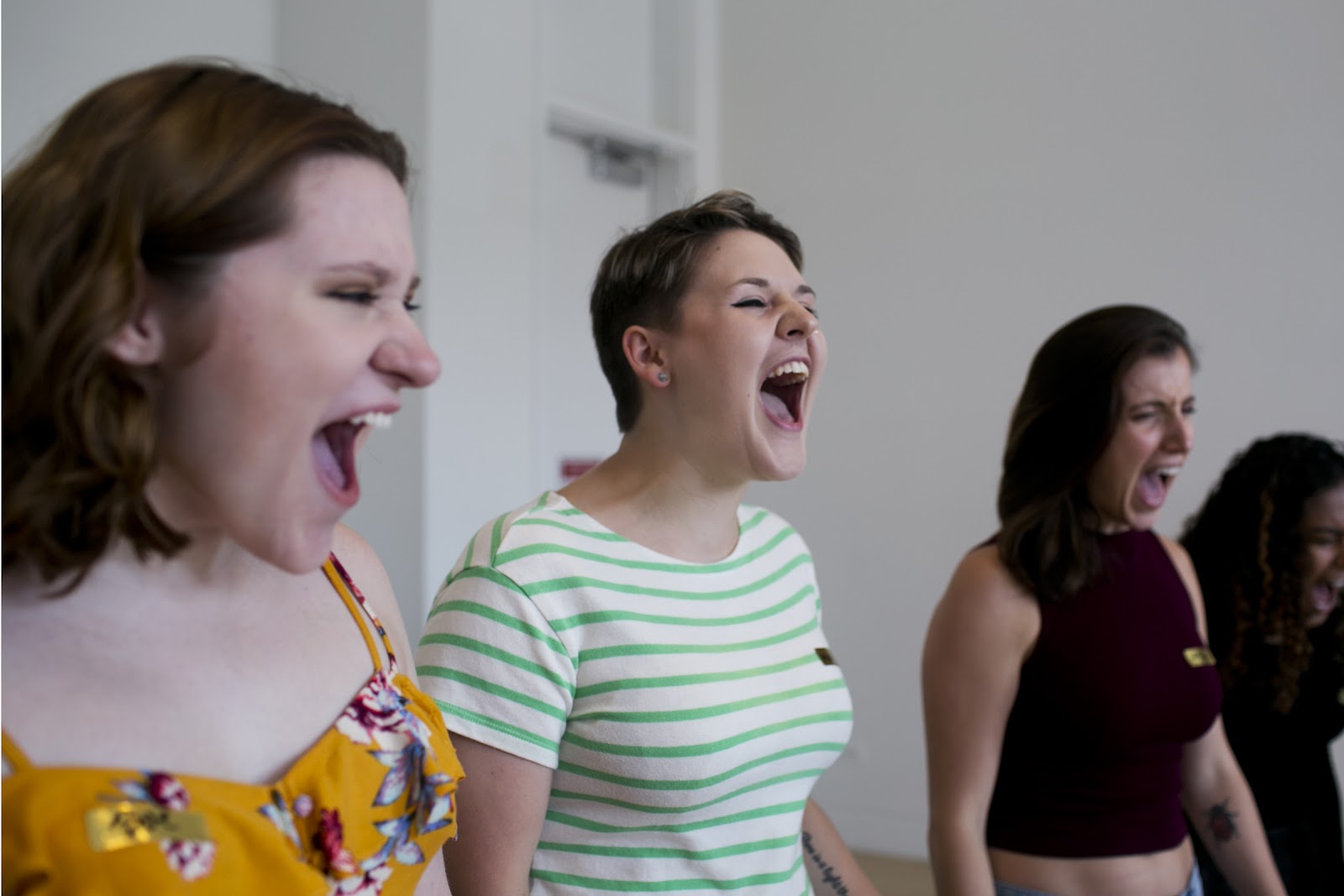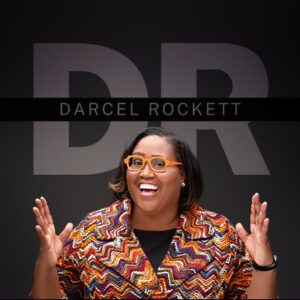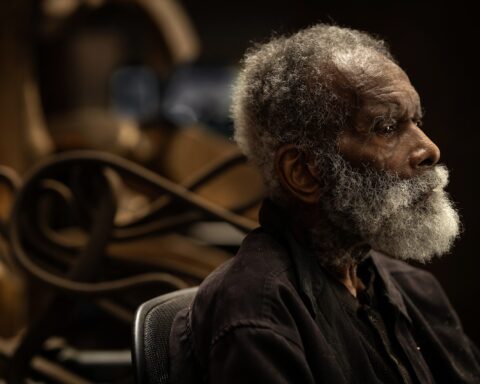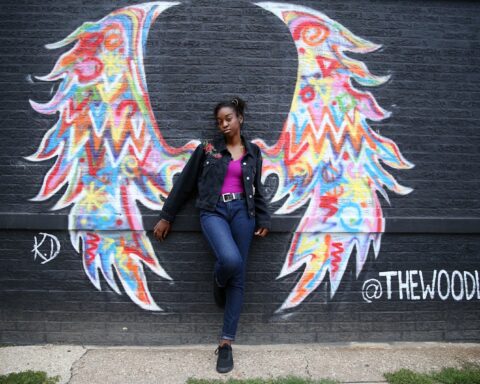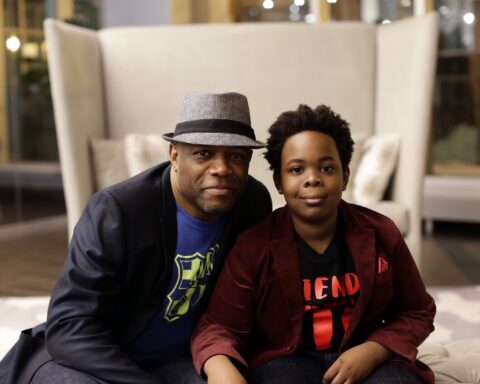On a recent fall afternoon, on the second floor of the DePaul Art Museum, around 20 women took the training wheels off their voices.
The white-walled space was filled with music, hugs, resounding clapping and occasional laughter. Water was plentiful, conversation was too, and every so often screams would pierce the chatter.
“No!” “Stop!” “Why?” — words, the product of women releasing raw emotion into the air. Some yelled alone; others wanted the support of the group and asked everyone to yell in unison.
Photographer and artist Whitney Bradshaw, 49, is the visionary behind “Outcry.” She hopes her camera lens will shine a light on the silencing of women and girls domestically and around the world.
“Through this project, I provide women a space where they can be heard, supported and encouraged to speak out and up for themselves and for one another,” Bradshaw’s website says. “I hope the work empowers women who take part in it as well as those who view it, all while encouraging empathy and understanding in all who see it.”
Since the night of the January 2018 Women’s March, the Logan Square resident has captured the act of women screaming in portraiture. She started photographing the women in her home — the DePaul workspace and exhibit opened in early September. Bradshaw has photographed more than 100 women so far — as young as 13 and some into their 70s.
Leslie Hull, a Rogers Park resident and a Northeastern Illinois University vocal and theater teacher, attended the Sept. 21 “scream session” after a friend had participated in one. Hull said she wanted to lend her face and voice to the project because too often women are taught to use “inside voices, or to be polite, or make accommodations for others during times of strain or stress for women.”
She tries to impart the “cathartic” process of screaming — releasing that restraint — to her female students.
“I feel like everyone is feeling it right now, but no one is just walking down the street screaming,” Hull said. “And I feel like some days everyone could, especially women. We could just be walking around screaming all day 24/7. So to have the opportunity to do it in a group of women, who are here to express themselves — to be heard and giving permission to — it is everything.”
Bradshaw, also chair of the visual arts department of Chicago High School for the Arts, agrees.
“I think a lot of women who come to scream are coming for a myriad of reasons, but one of them is (Donald) Trump and this Brett Kavanaugh nomination,” she said. “We’re all really angry. I think a lot of people see this work and think #MeToo — that’s huge, but it’s bigger than that. I think it’s also about taking a stand and changing representation of women. I feel the work challenges beauty ideas of women — women being this ‘good girl.’ ”
Before the women scream, Bradshaw leads the group (as small as five, as large as 12 when at her residence) in scream practice, demonstrating different ways to scream. The goal is to get the women comfortable with the idea. The women chat for an hour, then photograph for an hour, Bradshaw taking three photos of each. After, she shows her subjects the images, and the group continues bonding. Sessions are typically held once a week, and Bradshaw’s neighbors are well aware of her ongoing work.
“Screaming is not something that our culture looks positively upon or that you’re encouraged to do,” she said. “It’s uncomfortable. A lot of women have come to tell me that they’re doing (a scream session) because it’s something that they’re afraid of doing. But our voices are really powerful, and they can save us, and actually have saved me and a number of women who’ve been in this project as well.”
One woman who attended the Sept. 21 “scream session” pulled memories from a specific event that forever had an impact on her voice: the time a male boss yelled at her, and she froze.
Another woman in Bradshaw’s collection endured a home break-in — she screamed, the perpetrator took off and people came to help. Bradshaw had a similar situation in her past when, during a camping trip with a friend, an unknown man approached her tent and tried to get in.
Artist Stefany Dominguez, 23, was nervous about screaming. But after the Irving Park resident participated in July, she said being vulnerable in front of other women made her feel comfortable to just let it all out.
“I felt each scream that I had just became more true,” she said. “At first I was a little timid, but by the last scream, I was like, ‘This is me, this is my yell, hear me roar!’ Just letting it out in a full roar is very empowering.”
Alison Cuddy, artistic director of the Chicago Humanities Festival, called her “Outcry” session “a really interesting and moving experience.”
“It just blew my mind,” she said. “This is a project about creating space for women for whatever purposes, and when you create that space … how beautiful that is.”
Artist Joyce Owens reached out to Bradshaw on social media to join a session.
“It was an extraordinary experience because of the content, because of the people and because (the women) saw the truth in those screams, and everybody felt compelled to respond to that truth to each other in that space,” Owens said. “It was a feeling of understanding and sisterhood. It didn’t matter if you were black or white, young or old, there was a sisterhood.”
Bradshaw is considering expanding “Outcry,” possibly promoting the project on social media, so women in other countries can replicate the concept and contribute their own photos. By the time the DePaul exhibit ends Dec. 16, she hopes to have added 60 more portraits, at least.
“All the women in (the collection) are brave, powerful women,” Bradshaw said. “I think one of the things I love most about the project is when we all come together and engage in this exercise, it takes a lot of bravery, and I think that’s good practice for finding our bravery out in the world when we need to and also to speak up for each other all the time.”
Whitney Bradshaw will be conducting another scream session at the DePaul Art Museum on Nov. 10, 11a.m.-1 p.m. Interested parties can contact Bradshaw at whitneybradshaw.com.
